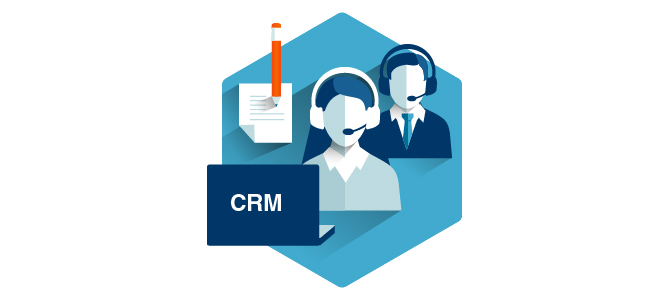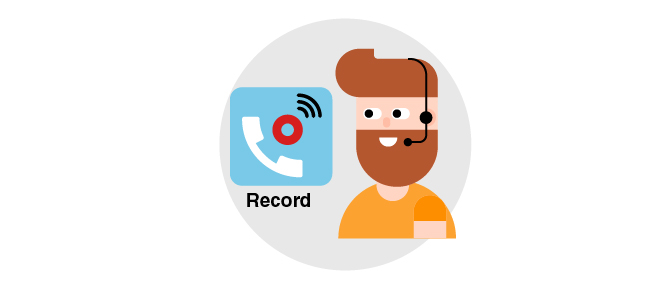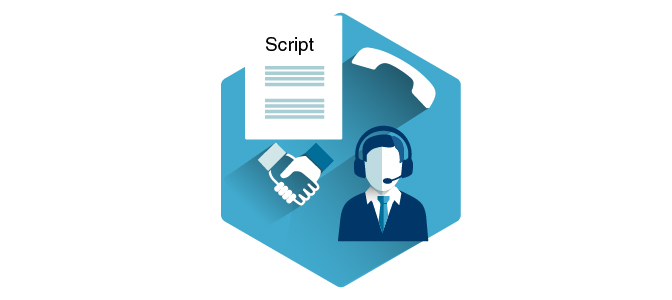18 cold calling tips and tricks to qualify and convert more leads
We’ve all received a random call from someone trying to sell us stuff. It can be annoying to your leads, and you have to prepare yourself for rejection. But cold calling is an essential element of a successful sales strategy.
There are many effective tactics you can employ to turn a cold call into an opportunity. Below we’ll cover the 18 best cold calling tips and tricks to ensure you qualify and convert more leads with your cold calling efforts.
1. Use a customer relationship management (CRM) solution

In order to succeed at cold calling, you need to have lead data at your fingertips. Customer relationship management (CRM) software is the gold standard these days for customer and lead data storage.
You can use your CRM to store personal contact data, as well as behavioral data that helps you understand who your target is before you reach out. A CRM can also automate various parts of the cold calling process (more on that below).
2. Leverage an auto-dialing tool for cold calling
If you use an all-in-one CRM, your system will also include sales tools, marketing automation, and customer support functionality. One of the features that come in some all-in-one CRMs is auto-dialing.
Auto dialing lets you create a list of leads to call and the system dials each one of them in sequence. Reps don’t have to manually dial each number, which saves loads of time and lets them make more calls in less time.
3. Create voicemail drops
Another feature you get with an all-in-one is the ability to leave voicemail drops. You pre-record a number of voicemails that you plan to leave in various scenarios.
If you make a call and no one answers, you can select the appropriate pre-recorded voicemail and with the click of a mouse leave that message and move on to the next call.
4. Record your calls

Recording your calls lets you refer back to them if you forget something from the call. It’s not a common feature in most CRM solutions. However, some do include it. For example, if you decide to select Agile CRM as your all-in-one, you’ll have the ability to record every call you make.
5. Take notes in your CRM during the call
If you integrate crm-telephony with your CRM, you can make calls from your CRM rather than using a traditional telephone. You open the contact record of the lead you’re reaching out to, click call, and the system dials their number.
Then, while on the call you can take notes on the screen while you speak. Those notes are then attached to the contact record’s call history following the call. You can then reference them later once you complete the call.
Check out how much telephony and CRM integration increases productivity.
6. Utilize post-call automation
With an all-in-one CRM, you can automate loads of tasks that you would otherwise do manually following the call. You create an automated workflow, and your flow steps take place automatically once you complete the call.
This could include sending a follow-up email, creating a task for yourself to follow up in a few days, and more.
Read more about post-call automation.
7. Research your target and their business

If you practice B2B cold calling, it’s important to research your lead before you call. Check out their website. Read their social media pages and their blog. If you see on their Facebook profile that they are a vintage car enthusiast, casually mention that you’re saving to buy one.
Do it subtly, and you’ll establish an instant connection, and they’ll give you more face time, leading to more leads converted, and more deals closed.
8. Leverage the data in your CRM to prepare
In addition to researching leads in the ways described above, you can learn a lot about the lead by digging into the data you have on them in your CRM.
You can see which content they have downloaded, which web pages they have visited, and so on. This will provide you with insight into their product interests, which will help you prepare the most relevant talking points for the call.
9. Personalize your outreach
With access to all the data in your CRM, you can personalize your discussion with them. For example, if their office is in Wisconsin, and there was a huge blizzard there yesterday, you can mention it and say you hope everything is ok up there. Personalized communication work wonders for building trust with leads.
10. Talk about benefits, not features

Don’t call a lead and jump right into the features of your product. First, you need to establish a connection with them by personalizing your conversation.
Once you get to talking about your product or company, tell them how it benefits companies like them. They don’t want to know about a great new product update; they want to hear about how that will make their lives easier and solve their problems.
11. Prepare persuasive data and statistics
If you can go into a call armed with hard numbers, you’ll be well prepared. For example, if you can tell your lead that Company X tripled revenue in two years after starting to use your product, the lead will envision themselves in that situation.
You can tell a lead all day how great your product is. But numbers speak volumes and are hard to contest.
12. Make the call about them and their needs
When cold calling, don’t start off by boasting about your product or company. The discussion needs to revolve around the lead and their needs.
Ask questions that will reveal their pain points. Ask them what their biggest challenges are. Allow them to talk about themselves and their needs. Once they do, you can offer a solution that will benefit them directly per their unique use case.
13. Stroke their ego

Because you will have done your research, you will know a lot about your lead before the call. If they have won awards, for example, you can mention that and congratulate them.
Tell them that you came across them and noticed how successful they are and how impressive their work is. Tell them that you try to only work with clients who are highly successful, and you see that in them. A little flattery will go a long way and help you get that first meeting.
14. Find common ground to establish rapport and trust
Converting leads requires trust. Leads must trust you to feel comfortable doing business with you. As mentioned above, if you research well you can find some common ground to touch on during the call (such as having a shared interest in camping or trading stocks), you’ll be more successful.
Bring up those topics during the call and your discussion will become much more casual and comfortable. That will build trust, and they will be more likely to give you a chance to elaborate on your pitch.
15. Provide some free helpful content
Your first cold calling attempt shouldn’t be centered around selling your product. The objective should be to start a dialogue and influence them to see you as a helpful resource and potential partner, not a money-hungry wolf.
Tell them since they work in X industry, you thought this eBook or case study might be helpful in providing them with new ideas. If all you do is try to convey that you’re here to help them, they will see you as a partner in a potential mutually-beneficial relationship.
16. Know your script but don’t read it

Many sales reps use cold calling scripts to drive their calls. But, to me at least, it’s super obvious when someone calls me and is reading a script. It sounds robotic and disingenuous.
New reps can use scripts, but it’s always best to use them as a guide rather than reading them word for word. For experienced reps, I recommend scrapping the call script altogether. Instead, create bulleted talking points and touch on them in a casual, more fluid and natural way.
Plus, if you rely on reading a call script, you won’t know what to do when a lead asks an unexpected question that you don’t have in your script. So, use them cautiously.
17. Use lead scoring to prioritize your calls
When you use an all-in-one CRM that includes marketing automation software, you can leverage lead scoring to identify the most sales-ready leads. You can score leads for demographic data and actions they take. And that’s all tracked in your CRM.
The more they engage with you, the higher their score rises. When they reach your established lead scoring threshold to be considered marketing qualified, the system automatically passes them to sales. This lets sales focus on calling those that have displayed buyer intent and leave the rest for additional nurturing.
18. Measure performance to constantly improve
With an all-in-one CRM, you get access to extensive metrics and analytics. You can keep tabs on who is making the most calls, who is creating the most opportunities, and who needs support to improve their performance.
Continual improvement is essential for growth. And you can’t continue to improve without hard metrics and reporting that gives you the insights to make data-driven decisions.
Conclusion
Above we covered some key cold calling techniques that really work. Cold calling may seem like a pain to many, but it’s an essential evil if you want to qualify and convert more leads and grow your business.
Follow the tips above, and you’ll realize the importance of effective cold calling.
Do you have any anecdotes, personal experiences, or tips about cold calling that you’d like to share with our readers? Please share them in the comments section below!

No Comments